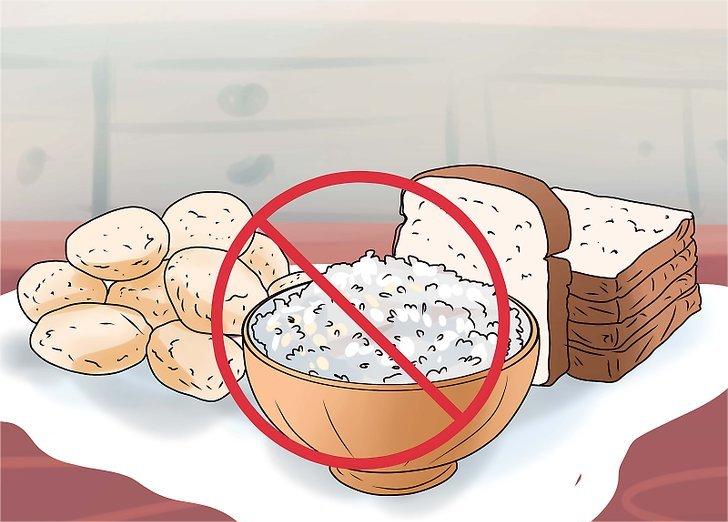Seborrheic dermatitis, also known as seborrheic eczema, is a common chronic, papulosquamous, superficial inflammatory skin disease.
It is often distributed in areas with strong sebum secretion (such as the head, face, chest, and back, etc.) and body folds (such as under the breasts, armpits, external genitalia, inner thighs, groin, etc.). Small papules will appear at first and gradually expand and merge into dark red or yellow-red patches. In some patients, the patches are also covered with greasy scales or scabs. In severe cases, there may even be oozing, scabs, erosion, etc., which may be accompanied by varying degrees of itching.
Common Symptoms of Seborrheic Dermatitis
Seborrheic dermatitis mostly manifests as well-defined red plaques accompanied by light yellow greasy scales, which are distributed in areas rich in sebaceous glands, such as the scalp, face, ears, and chest.
- Scalp manifestations: often erythema and white or greasy scales, hair thinning or loss, accompanied by inflammation and itching. In severe cases, there will be oozing, scabs, and odor, and it can invade the entire head.
- Symptoms in other parts: The skin lesions in adjacent parts can merge into sheets, covered with greasy scales, sometimes with slight exudation.
- Symptoms of infantile seborrheic dermatitis: A layer of gray-yellow, greasy scales or scabs will appear on the head. It is generally neither painful nor itchy. It does not affect the child’s health, nor does it affect the child’s diet and sleep. Infantile seborrheic dermatitis usually occurs about a week after birth and resolves on its own before one year of age.
Causes of Seborrheic Dermatitis
The cause is not yet clear. It is generally believed to be related to the following factors:
- Genetic factors: Most seborrheic dermatitis has a hereditary tendency. Because some people are born with stronger sebum secretion, they are prone to seborrheic dermatitis.
- Malassezia infection: Malassezia can decompose fatty acids, causing abnormal differentiation of keratinocytes, and leading to the destruction of the skin barrier, thereby causing skin inflammation.
- Impaired immune function: People with suppressed immune function are more likely to suffer from seborrheic dermatitis. Severe and stubborn seborrheic dermatitis may be an early symptom of AIDS patients.
- Epidermal barrier function: Damage to the barrier and function of the stratum corneum will increase sensitivity to local stimulation, thereby easily inducing seborrheic dermatitis.
- Sex hormone disorders: Increased androgen levels may lead to active sebaceous gland function and increased sebum excretion, which may induce this disease.
- Others: Seborrheic dermatitis is also common in neurological diseases (such as Parkinson’s disease, etc.) and genetic diseases (such as Down syndrome, etc.). In addition, a greasy diet, high mental stress, sun exposure, severe zinc deficiency, and misuse of cosmetics can also induce or aggravate the disease.
Seborrheic Dermatitis Treatment
- Topical drugs: The functions are fat removal, anti-inflammatory, anti-dandruff, and anti-itching.
- Commonly used drugs are mixed preparations containing glucocorticoids, but their use on the face is not recommended.
- Calcineurin inhibitors are used in patients with moderate to severe disease or those who fail to respond to weak corticosteroids.
- Zinc oxide oil or paste can be used in areas with a small amount of exudation and erosion.
- Skin lesions on the head can be washed with shampoo containing antifungal ingredients (ketoconazole lotion).
- Internal medicines: B vitamins and zinc preparations can be taken orally; antihistamines can be taken when itching is severe; tetracycline or erythromycin can be taken orally in case of bacterial infection.
- Intense pulsed light: can inhibit sebum secretion and relieve itching symptoms.
- Photodynamic therapy: Utilizes photochemical reactions to produce free radicals, singlet oxygen, and other toxic substances to induce cell apoptosis and necrosis, thereby achieving the purpose of treatment.
Daily Precautions for Patients with Seborrheic Dermatitis
- You should maintain a regular life and get enough sleep. Patients should pay attention to proper exercise and rest, and not be nervous.
- Wash your hair frequently to keep your scalp clean and dry.
- You can use weakly alkaline and mild shampoo to clean your head and face. Avoid using strong alkaline lotions to prevent irritation of the affected skin.
- Avoid mechanical stimulation such as friction and scratching, and do not forcefully remove scabs to avoid infection.
- Avoid bleeding after ulceration and pathogens entering the wound and causing infection.
- Keep the room clean and the room temperature should not be too high to avoid excessive sweating. When you have a high fever and sweat, wipe yourself in time and change into clean, soft clothes.
- Baby lotion can be used after bathing to moisturize the skin.
Prevention of Seborrheic Dermatitis
Seborrheic dermatitis is easy to relapse. Currently, there are no very effective preventive measures. The following aspects may reduce the chance of occurrence of the disease:
- To keep your mood comfortable, you can choose to listen to your favorite music or go out for a walk.
- Develop good sleeping habits, ensure sleeping hours, and avoid staying up late.
- Strengthen physical exercise, enhance physical fitness, and resist diseases.
- Use gentle movements when washing your face, avoid frequent and vigorous washing, and avoid using skin care products with more oily ingredients.
- Use reasonable skincare to keep your skin and scalp fresh and avoid bacterial invasion.
Conclusion
Suppose this disease is not taken seriously and is not treated in time. In that case, it may lead to hair loss, thinning hair, greasy face, and generalized papules of varying degrees, which will affect the patient’s appearance over time, dampen the patient’s self-confidence, and also cause the patient’s economic loss.




